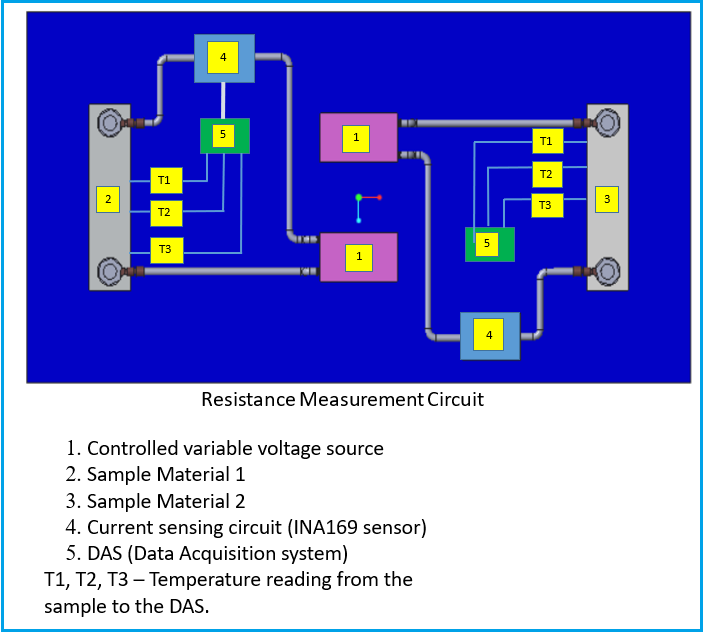Other Parts Discussed in Thread: INA190
Dear Experts,
I require help to connect the INA169 sensor to a circuit which goal is to measure the resistance value of the sample 2 and sample 3(see the pic) in different temperature by the help of Data acquisition system(DAS).
I require help on the physical connectivity of INA169 sensor to voltage supply source ,samples and DAS .
T1, T2, T3 – Temperature reading from the sample to the DAS.
Thanks



